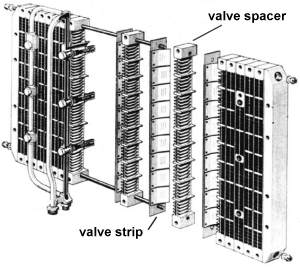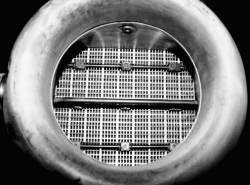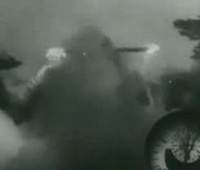A Classic
Last Updated: 11 January, 2003
A Groundbreaking Engine
This engine was a masterpiece of simplicity and heralded in the dawn of what we now know as the cruise missile or unmanned aerial vehicle (UAV). Little was known about this engine until the end of WW2 when the allied forces were able to examine a number of complete and partly constructed V1s recovered from formerly occupied territories along Europe's western coastline.

Tests conducted by the NACA (the forerunner of NASA) on captured engines and
units built to the German blueprints produced the following figures:
Specifications
The full report (including the basic dimensions of the engine) is freely available in PDF format for downlad from the NACA archives and makes interesting reading. 
Perhaps the most interesting aspect of the Argus is its valving system. Unlike small pulsejets that often use a simple flower-like petal valve, the Argus used an array of spacers and small, rectangular spring steel valves that were riveted to a holding strip. The valve strips and spacers were then assembled into an array as shown in this diagram. This construction method allowed the valve grid to be manufactured using relatively cheap castings and by comparitively unskilled laborers -- important factors in a war-time environment. Despite its fairly simple design, the valve grid is surprisingly efficient since it provides a much straighter path for the incoming air than does a petal-valve setup. Fuel was sprayed directly into the engine through a 3 x 3 array of nine nozzles right behind the valve grid. Yes, the Argus was a direct-injection pulsejet. The fuel supply was pressurized by the same tank of compressed air that was also used to drive the gyros and operate the control surfaces of the V1 airframe. The body of the engine was built from rolled and welded mild steel plate which, given that it only had to last 35 minutes or so, was more than adequate for the job. An external system was used to inject air behind the upper-most row of fuel nozzles for starting. Some information suggests that in the bitter cold experienced during winter months, acetylene gas was also used to facilitate starting.
Unfortunately, like most pulsejets of the era, the Argus suffered from poor fuel economy, short valve-life and relatively poor (compared to a turbojet) performance. Much effort was spent trying to address these problems and some of the results of that work can be found in the NACA's wonderful archives. Here are some of the more interesting papers (in PDF format): The Ford Motor Company in the USA was contracted to build a number of Argus clones at the end of WW2 but, according to the scant amount of information available, few of these appear to have ever been used.Although the Argus only saw limited service as an operational engine after its introduction in mid-1944, its effect as the power source of the much-feared flying bomb was, and always will be, of immense significance in the field of jet propulsion.
|
|



